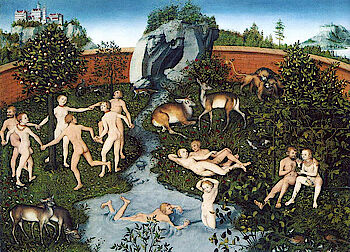Cranach online
In the 16th century Lucas Cranach the Elder, his sons and their workshop executed thousands of works of art as court painters for the Wettiner, a Saxonian noble family, and other royal houses as well as clerical and private patrons. A great number of these works, especially the panel paintings, but also the altarpieces, drawings and prints have been preserved until today.
Since the major Cranach exhibition in Dresden 1899, efforts have been made to compile the research material on Lucas Cranach in manifold monographs and catalogues raisonnés. The most significant and most extensive publication is the Werkkatalog by Max J. Friedländer and Jakob Rosenberg (1932/1979), which up to date is considered a benchmark.
Additionally, there are the catalogues of drawings by Theo Ludwig Girshausen (1937) and Jakob Rosenberg (1960). Beside the catalogue by Dieter Koepplin und Tilmann Falk which accompanied the exhibition in the Kunstmuseum Basel in 1974 and the Cranach monograph by Werner Schade, published around the same time, a number of later writings and exhibition catalogues were added to research. In recent years especially, results from material sciences and modern optical analysis methods led to new research approaches.
Until today Cranach research has to deal with unsolved problems, especially concerning the actual extent of the work corpus and the attribution of works within the workshop and its circle. The internet becomes increasingly significant as a presentation platform of research content. Several museums have already started publishing their collections also in terms of image digitization. Concerning the comprehensive œuvre of the Cranach workshop, information relevant to research is still widely dispersed, which makes the pooling of digital resources overdue.
With its portal Cranach Online arthistoricum.net offers direct access to a great number of digitized research resources as well as the digital catalogue raisonné (CORPUS CRANACH). Moreover, the internet platform cranach.net with its "virtual research institute" is open to collaboration and lively scholarly exchange.
